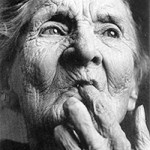Urinary incontinence is a common issue among seniors, affecting their quality of life and requiring specialized care. Retirement homes in Canada provide essential support to help residents manage incontinence with dignity and comfort. This article explores the services, facilities, and medical assistance available to seniors with incontinence in Canadian retirement homes.
 Understanding Urinary Incontinence in Seniors
Understanding Urinary Incontinence in SeniorsUrinary incontinence occurs due to various factors, including aging, weakened pelvic muscles, neurological disorders, and chronic conditions such as diabetes. Without proper care, it can lead to skin infections, falls, and social isolation. Retirement homes are equipped to help seniors manage incontinence through personalized care and specialized services.
Most retirement homes have trained caregivers and on-site nursing staff who provide round-the-clock assistance with toileting, hygiene, and incontinence management.
Each resident receives a customized care plan based on their medical condition, mobility, and incontinence severity. Plans often include scheduled bathroom breaks, monitoring of fluid intake, and specialized therapy if applicable.
Ask questions regarding retirement homes to our experts
To ensure cleanliness and comfort, retirement homes offer frequent laundry services for bedding and clothing. Caregivers also assist with personal hygiene routines to prevent infections and discomfort.
Retirement homes are designed with accessibility and safety in mind. Features such as grab bars, wheelchair-accessible bathrooms, and emergency call buttons help residents navigate facilities safely.
Certain foods and beverages can aggravate incontinence. Many retirement homes provide dietary plans that minimize bladder irritants while ensuring residents remain hydrated.
Living with incontinence can be emotionally distressing. Retirement homes offer counseling services, peer support groups, and wellness programs to help residents cope with their condition.
| Service | Description | Benefits for Seniors with Incontinence |
|---|---|---|
| 24/7 Medical Assistance | On-site nurses and caregivers available around the clock | Ensures immediate support for toileting and medical emergencies |
| Personalized Care Plans | Customized incontinence management strategies | Improves comfort and reduces accidents |
| Accessible Bathrooms | Grab bars, wheelchair-accessible showers, emergency call systems | Enhances safety and independence for residents |
| Hygiene and Laundry Support | Frequent changes of bedding and personal clothing | Prevents infections and promotes cleanliness |
| Emotional Support Programs | Group therapy, counseling, and wellness activities | Reduces stress and improves mental well-being |
When selecting a retirement home for a senior with incontinence, consider the following:
Not all retirement homes offer specialized incontinence care. It's important to check with each facility about the services they provide and whether they have trained staff to assist residents with incontinence needs.
Some retirement homes provide incontinence supplies as part of their care package, while others require residents to purchase their own products. It's best to confirm this before moving in.
Retirement homes maintain high hygiene standards by offering frequent laundry services, regular bathroom breaks, and personal hygiene assistance. Caregivers also monitor residents for signs of infection and ensure they receive prompt medical attention if needed.
Some provinces offer financial assistance for incontinence-related medical needs, but coverage varies. Families should check with local health authorities to determine eligibility for government support.
It depends on the level of support provided by the independent living facility. Seniors with severe incontinence often benefit more from assisted living or long-term care homes where 24/7 support is available.
Retirement homes in Canada provide essential support for seniors with incontinence, ensuring they receive the medical care, hygiene assistance, and emotional support they need. When choosing a facility, families should prioritize care services, facility design, and staff expertise to ensure their loved ones receive the best possible care.
Don't hesitate to contact us at 343 309 5289. We can help you choose the right establishment for you and assist you in your search.

Find a suitable senior residence